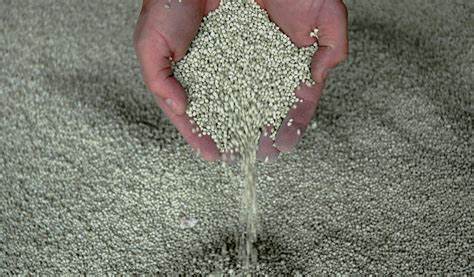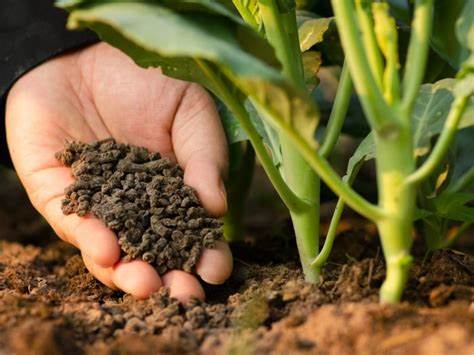Ammonium bicarbonate and diammonium phosphate are commonly used fertilizers in agriculture, which are processed by fertilizer production line. So, what is the key point of fertilization technology?

Ammonium bicarbonate
The nitrogen content of ammonium bicarbonate is about 17%, which is the lowest in solid nitrogen fertilizer. The moisture content of ammonium bicarbonate is generally 5% – 6%, and it is easy to deacidify and combine with acid. When the temperature is lower than 20 ° C, when the temperature is slightly higher or the moisture content in the product exceeds a certain standard, ammonium bicarbonate will decompose into ammonia and carbon dioxide, resulting in the loss of nitrogen fertilizer efficiency. It is a physiologically neutral available nitrogen fertilizer, which is suitable for various crops and soils, and can be used as basic fertilizer and top fertilizer. Therefore, it is also used as raw materials and other nutrients, and processed into other special fertilizers in batch through a pan granulator.

It can be used as fertilizer for ditch bottom. If it can be combined with the depth application of cultivated land, the effect will be better. However, it should be noted that the depth of application should be greater than 6cm (sandy soil can be deeper), and the soil should be covered immediately after application. Only in this way can nitrogen loss be reduced. When ammonium bicarbonate is used as a coat, the dry land can combine with the intermediate. The depth of application should be less than 2 inches. The soil should be covered immediately and watered in time. The paddy field should be kept about 1 inch shallow water layer, but not too shallow, otherwise it is easy to damage the roots. After application, plough in time to promote the absorption of fertilizer by soil.
When ammonium bicarbonate is used as a coat, it is important to remember not to apply it after rain or before dew dries. Ammonium bicarbonate, whether used as basic fertilizer or surface treatment, should not be sprayed on the soil surface to prevent nitrogen volatilization, nitrogen loss or damage to crops. At the same time, avoid high temperature season and high temperature period, and try to apply it in the season with temperature lower than 20 ° C.
Application of common fertilizer
Diammonium phosphate
Diammonium phosphate is a kind of fast fertilizer with high concentration, which is suitable for all kinds of crops and soil, especially for ammonium, phosphorus and other crops. It is suitable for basic fertilizer. If used as a top coat, it should be applied as early as possible before covering the soil with a depth of 10 cm. It should not be too close to the crops to avoid burning them. When used as seed fertilizer, it should not be in direct contact with the seed. Do not apply diammonium phosphate in water, otherwise most of its nitrogen will remain on the ground surface and should not be mixed with alkaline fertilizers (such as plant ash and lime) to prevent nitrogen volatilization and reduce the availability of phosphorus. We can also use NPK fertilizer granulator to further process high quality compound fertilizer.
Frustrated with the high cost of fertilizer? How about geting your own fertilizer production business? Here are tips to use most common seen organic materials to make fertilizer at lower costs: https://manuretofertilizer.com/

